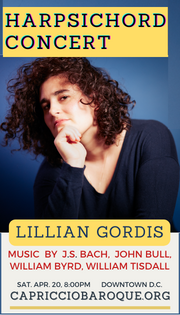Sistine Chapel Choir makes a rare and refined appearance at National Shrine

The Sistine Chapel Choir performed Wednesday night at the National Shrine of the Immaculate Conception.
The Sistine Chapel Choir took a temporary leave from its usual duties–singing for the Pope’s liturgical celebrations in Rome–to embark on a U.S. tour this week. On Wednesday evening the ensemble of men and boys gave a free concert in the Upper Church of the Basilica of the National Shrine of the Immaculate Conception. The audience, which filled that vast space, gave them a rock star’s reception.
The ensemble’s name is a tribute to Pope Sixtus IV, who reorganized the ensemble in the 15th century, when he also built and began the decoration of the Sistine Chapel. The present director of the group is Msgr. Massimo Palombella, appointed by Pope Benedict XVI in 2010. He has sought to restore the group to its former glory, specifically through a focus on the music presented in this concert, the Catholic polyphony of the Renaissance. One sign of that revitalization is this tour, the choir’s first to the U.S. in over thirty years.
The first piece was a Gregorian chant, sung only by the men, here as throughout the evening without any amplification. Although over twenty in number, the group made a sound remarkable for its hushed, evanescent quality. Palombella put prime importance on the shaping of the musical line, insisting that unstressed final syllables in the Latin text be much quieter in volume. In contrast to some other interpretations, the choir paced this chant slowly and deliberately, and the tempo and softness forced people to quiet down and lean in to hear.
The boys, over thirty in number, then joined the men for most of the other selections, motets by the three giants of Catholic Reformation composition, Palestrina, Lasso, and Victoria. In contrast to his interpretation of chant, Palombella often set the tempo of these pieces rather fast. In the case of the first motet, Palestrina’s Benedixisti, Domine, the result was an almost amorphous blur, as various parts came briefly into prominence and vanished at an astonishing pace.
In other pieces the pulse was more apparent in the sound. Even so, in Palestrina’s Super Flumina Babilonis, for example, the rushed pace and mannered crescendi and decrescendi obviated most of the harmonic interest, as in the gorgeous suspensions Palestrina calls for in the final line of text (“Suspendimus organa nostra”). It is a style that draws attention to the overly loud singing of many choirs in this repertory, including the leading American church choirs, but it was also frustrating in its elusive qualities.
Almost hapless speed surprised in many of the motets, including Palestrina’s Sicut cervus, often heard in this country at a tempo about twice as slow. In the same composer’s Exsultate Deo, the fast ornate runs went by so quickly that they created a kind of watercolor wash effect, and the performance of Victoria’s Vere languores took almost no time to explore the dissonant word painting of its expressive text.
High points came in pieces alternating between the whole group and solo lines, featuring some of the choir’s best adult voices. In Lasso’s Magnificat Primi Toni, a cantor placed in the Basilica’s high pulpit chanted every other verse in a rich, resonant tone. The choral verses proved effective in varied miniatures; there was an especially pleasing effect of soft and quick melodic gestures fleeing away at the words “dispersit superbos mente cordis sui” (“he scattered the proud in the conceit of their hearts”). The adult singers alone performed Lasso’s Adoramus Te Christe, an affecting miniature that featured the delicate voices of the choir’s falsettists.
The revelation of the evening was the extended setting of the great Penitential Psalm, Gregorio Allegri’s Miserere, sung mostly in the original version of the piece, much simpler than the ornamented version generally heard today. The cantor again intoned the chanted verses from the pulpit, and most strikingly a group of adult soloists sang the quartet verses from the back of the church, a great distance away. That meant that one of the falsettists sang the famous high C in the ornamented version, which was slowly added to the performance in two later verses, a moment of extraordinary beauty, in part because it was so unexpected.
The final program item was a more rousing rendition of Palestrina’s six-voice motet Tu es Petrus, in many ways the choir’s signature number. The musicians closed the evening by offering a dance-like encore of Monteverdi’s Cantate Domino, in tribute to the 450th anniversary of that composer’s birth this past May.
The Cappella Musicale Pontificia Sistina will perform one more concert on its tour, 7:30 p.m. Saturday at the Detroit Opera House. sistinechapelustour.com






